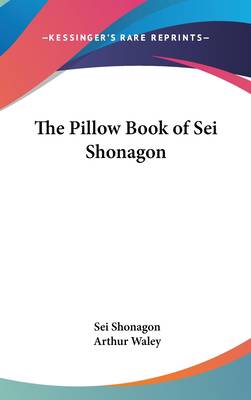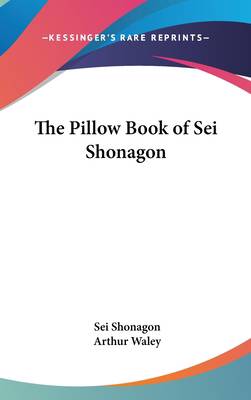
Door een staking bij bpost kan je online bestelling op dit moment iets langer onderweg zijn dan voorzien. Dringend iets nodig? Onze winkels ontvangen jou met open armen!
- Afhalen na 1 uur in een winkel met voorraad
- Gratis thuislevering in België vanaf € 30
- Ruim aanbod met 7 miljoen producten
Door een staking bij bpost kan je online bestelling op dit moment iets langer onderweg zijn dan voorzien. Dringend iets nodig? Onze winkels ontvangen jou met open armen!
- Afhalen na 1 uur in een winkel met voorraad
- Gratis thuislevering in België vanaf € 30
- Ruim aanbod met 7 miljoen producten
Zoeken
Omschrijving
The Pillow Book of Sei Shonagon is a collection of observations and musings written by Sei Shonagon, a Japanese court lady during the Heian period (794-1185 AD). The book is a mix of personal anecdotes, poetry, and lists of various things such as ""elegant things"" and ""things that make one's heart beat faster."" Sei Shonagon's writing is characterized by a sharp wit and a keen eye for detail. She often writes about the people and events at court, as well as her own experiences and emotions. The book is divided into sections, each with a different theme, such as ""The Seasons"" and ""People Who Should Be Avoided."" The Pillow Book of Sei Shonagon is a fascinating glimpse into the life and culture of medieval Japan. It offers a unique perspective on court life, social relationships, and the aesthetics of the time. The book has been celebrated for its literary style and its insight into the mind of a remarkable woman.996 A.D., with later revisions. The translation of the diaries of a court lady in tenth-century Japan, it is a collection of anecdotes, memories of court and religious ceremonies, character sketches, lists of things the author enjoyed or loathed, places that interested her, diary entries, descriptions of nature, pilgrimages, conversations, poetry exchanges--indeed, almost everything that made up daily life for the upper classes in Japan during the Heian period.This scarce antiquarian book is a facsimile reprint of the old original and may contain some imperfections such as library marks and notations. Because we believe this work is culturally important, we have made it available as part of our commitment for protecting, preserving, and promoting the world's literature in affordable, high quality, modern editions, that are true to their original work.
Specificaties
Betrokkenen
- Auteur(s):
- Uitgeverij:
Inhoud
- Aantal bladzijden:
- 160
- Taal:
- Engels
Eigenschappen
- Productcode (EAN):
- 9781432602390
- Verschijningsdatum:
- 11/01/2005
- Uitvoering:
- Hardcover
- Formaat:
- Genaaid
- Afmetingen:
- 152 mm x 229 mm
- Gewicht:
- 408 g

Alleen bij Standaard Boekhandel
+ 105 punten op je klantenkaart van Standaard Boekhandel
Beoordelingen
We publiceren alleen reviews die voldoen aan de voorwaarden voor reviews. Bekijk onze voorwaarden voor reviews.











